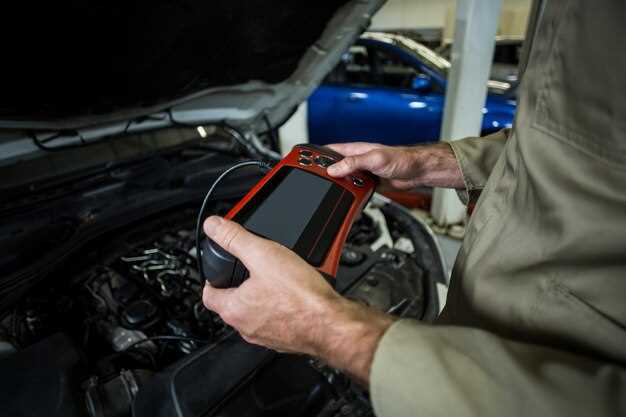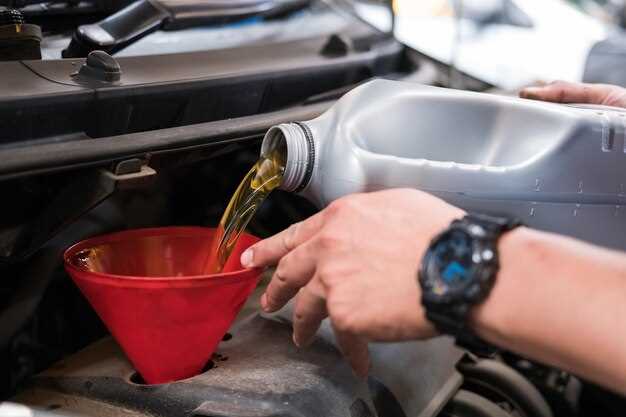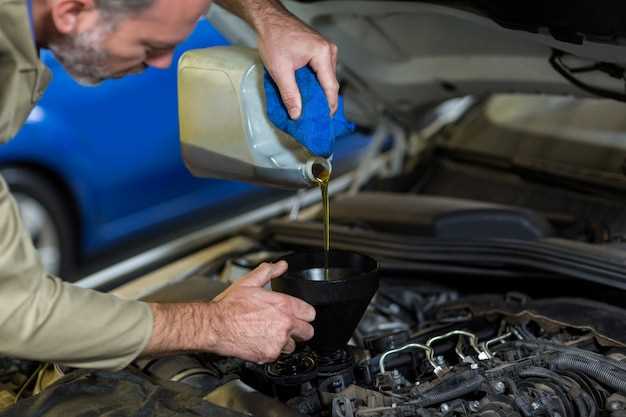How to Check and Replace Audi Brake Fluid

Regular maintenance of your Audi is crucial for ensuring optimal performance and safety, and one of the most important aspects of this maintenance is checking and replacing brake fluid. Brake fluid plays a vital role in the hydraulic brake system, allowing force from the brake pedal to be transmitted efficiently to the brake components. Over time, brake fluid can become contaminated with moisture and debris, which can severely impact braking efficiency and safety.
In order to maintain the integrity of the braking system, it is essential to understand the signs that indicate a need for brake fluid inspection. Symptoms such as a spongy brake pedal, decreased braking responsiveness, or any visible leakage around the brake lines should prompt an immediate check of your Audi’s brake fluid levels and condition. Understanding how to properly check and replace brake fluid can empower Audi owners to take preventive action, enhancing vehicle safety and performance.
In this guide, we will explore the step-by-step process of checking and replacing brake fluid specific to Audi models. By familiarizing yourself with this procedure, you can not only save on service costs but also ensure that your vehicle remains in peak condition for both everyday driving and high-performance scenarios.
Understanding the Importance of Brake Fluid Quality
Brake fluid plays a crucial role in the safety and performance of your Audi’s braking system. The quality of this fluid is vital for ensuring optimal operation, as it directly affects the responsiveness of the brakes. Regular maintenance is essential, as contaminated or degraded fluid can lead to reduced braking efficiency, increased stopping distances, and even brake failure.
Brake fluid is hygroscopic, meaning it absorbs moisture over time. This absorption lowers its boiling point and can lead to the formation of air bubbles within the braking system. These bubbles can cause a spongy brake pedal feel and diminished braking power. Therefore, it’s imperative to regularly check the fluid quality and replace it as necessary to maintain the integrity of the braking system.
Moreover, the presence of contaminants such as dirt or debris can further compromise brake fluid quality. Using the correct type of fluid specified for your Audi is also critical; synthetic and mineral brake fluids possess different properties that impact braking performance. Neglecting brake fluid quality not only risks your safety but also may lead to costly damages to other brake components.
In conclusion, understanding and prioritizing brake fluid quality is a fundamental aspect of vehicle maintenance that directly influences the safety and reliability of your Audi. Regular checks and timely replacements are essential practices for all Audi owners.
How to Check Brake Fluid Levels in Audi Models

Checking the brake fluid levels in your Audi is a critical aspect of vehicle maintenance that ensures the brake system functions optimally. Follow these steps to accurately check the brake fluid levels in various Audi models.
| Step | Description |
|---|---|
| 1 | Park your Audi on a level surface and turn off the engine. Ensure the vehicle is in park or neutral and the parking brake is engaged. |
| 2 | Open the hood of your Audi. Locate the brake fluid reservoir, which is typically positioned near the back of the engine bay, close to the driver’s side. |
| 3 | Examine the reservoir. It is often translucent, allowing you to see the fluid level without removing the cap. Look for two markings: “MIN” (minimum) and “MAX” (maximum). |
| 4 | If the fluid level is below the “MIN” mark, it is essential to add brake fluid. Make sure to use the recommended type of brake fluid specified in your owner’s manual. |
| 5 | After checking or adding fluid, securely close the brake fluid reservoir cap. Close the hood, ensuring everything is properly latched. |
Regularly checking the brake fluid levels is essential for safe driving. Low brake fluid can lead to reduced braking performance, so make this a part of your routine maintenance.
Identifying Signs of Contaminated Brake Fluid

Brake fluid is a critical component in ensuring the safety and efficiency of your Audi’s braking system. Regular maintenance is essential, and identifying signs of contaminated brake fluid can help prevent costly repairs and potential accidents.
Here are the key indicators of contaminated brake fluid:
- Discoloration: Fresh brake fluid is typically clear to light amber in color. If you notice it appearing dark brown or black, contamination is likely present.
- Presence of Moisture: Water tends to mix with brake fluid over time, which can lead to a cloudy appearance. If the fluid looks murky, it may require replacement.
- Corrosion: Inspect the brake lines and components for signs of rust or corrosion. Contaminated fluid can lead to deterioration of these parts, indicating that the fluid needs to be replaced.
- uneven braking response: If you experience a spongy or unresponsive brake pedal, it may point to contamination in the brake fluid affecting hydraulic pressure.
- Burnt smell: A burnt odor emanating from the brake fluid reservoir may suggest overheating due to moisture, which compromises the fluid’s integrity.
It is essential to monitor these signs and schedule regular maintenance to maintain the performance of your braking system. If you notice any of the above indicators, it is advisable to consult a professional for further evaluation and potential brake fluid replacement.
Step-by-Step Guide to Replacing Brake Fluid
Replacing brake fluid is an essential maintenance task for Audi cars that ensures optimal braking performance. Follow this guide for a successful replacement.
- Gather Necessary Tools and Materials:
- New brake fluid (check your owner’s manual for specifications)
- Brake fluid bleeder kit or syringe
- Wrench for brake bleeder valve
- Clean cloths or paper towels
- Safety goggles and gloves
- Prepare the Vehicle:
- Park your Audi on a level surface.
- Turn off the ignition and engage the parking brake.
- Open the hood and locate the brake fluid reservoir.
- Check Existing Brake Fluid:
- Inspect the fluid level in the reservoir.
- Determine the fluid’s condition–clear fluid is good, while dark or cloudy fluid indicates a need for replacement.
- Remove Old Brake Fluid:
- Using a syringe, extraction tool, or turkey baster, remove the old brake fluid from the reservoir.
- Dispose of the old fluid properly, as it is corrosive and harmful to the environment.
- Refill with New Brake Fluid:
- Fill the reservoir with new brake fluid up to the recommended level.
- Ensure the cap is secured tightly to avoid contamination.
- Bleed the Brake System:
- Start with the wheel farthest from the master cylinder (usually the rear passenger side).
- Attach the bleeder kit to the brake bleeder valve.
- Loosen the valve with a wrench, allowing old fluid and air to escape.
- Keep the reservoir topped up to prevent air from entering the system.
- Close the valve when clean fluid flows out without bubbles.
- Repeat this process for each wheel in a specific order: rear passenger, rear driver, front passenger, front driver.
- Finalize the Process:
- Inspect the brake fluid reservoir again; top it off if necessary.
- Clean any spilled fluid with a cloth, as it can damage car paint.
- Test the brake pedal for firmness by pressing it a few times.
- Dispose of Old Brake Fluid:
- Take the spent brake fluid to a recycling or hazardous waste disposal facility.
- Never pour it down the drain or throw it in the trash.
Following these steps will help ensure that your Audi’s braking system functions effectively and safely. Regular maintenance of the brake fluid is crucial for the longevity and performance of your vehicle.
Recommended Types of Brake Fluid for Audi Vehicles
When it comes to maintaining the braking system of your Audi vehicle, selecting the appropriate brake fluid is crucial for ensuring optimal performance and safety. Audi recommends using brake fluids that meet the specifications set by the manufacturer, which typically include DOT 4 or DOT 5.1 fluids.
DOT 4 brake fluid is suitable for most Audi models, providing excellent performance in terms of boiling point and moisture absorption. Its higher boiling point compared to DOT 3 ensures greater reliability during heavy braking scenarios, making it a preferred choice for both standard driving and more demanding situations.
For Audi vehicles that experience extreme braking conditions, DOT 5.1 fluid is the ideal option. This type of brake fluid not only surpasses the performance of DOT 4 in terms of high-temperature stability but also offers superior resistance to moisture. This is particularly important as moisture can lead to brake system corrosion and reduced effectiveness over time.
It’s important to regularly check the brake fluid level and condition, as contaminated or old fluid can compromise brake performance. Always refer to your vehicle’s owner manual for specific recommendations on brake fluid and ensure that any fluid replacement or maintenance is carried out using the specified types to maintain the reliability and safety of your Audi.
Common Mistakes to Avoid When Handling Brake Fluid
When performing maintenance on your Audi’s braking system, properly handling brake fluid is crucial. One common mistake is using the wrong type of brake fluid. Audi vehicles typically require specific fluid, such as DOT 4 or DOT 5.1, and using a fluid that doesn’t meet these specifications can lead to brake failure.
Another mistake is neglecting to check the fluid level before replacing it. Low brake fluid can indicate leaks or other issues in the braking system. Always inspect the entire braking system for signs of wear or damage while changing brake fluid.
Exposure to moisture is another significant concern. Brake fluid is hygroscopic, meaning it absorbs water over time. Failing to replace old fluid can result in reduced braking efficiency and corrosion of brake components. Ensure you change the fluid according to the manufacturer’s recommendations.
Additionally, mishandling the brake fluid container can lead to contamination. Always use clean tools and avoid touching the inside of the cap or fluid reservoir. Contaminated fluid can compromise brake performance and safety.
Lastly, it’s essential not to overlook the brake fluid’s boiling point. Old or contaminated fluid has a lower boiling point, which can lead to brake fade during heavy use. Regular maintenance, including monitoring and replacing brake fluid, is vital for optimal braking performance.



